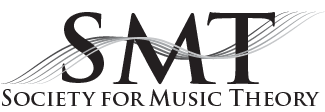Copyright © 2004 Society for Music Theory
6.3 Comparative Results
[1] In the pair of triads shown in Figure 6.3a, one is sampled from a chorale harmonization (see §4.1) by J.S. Bach (BWV 253, “Ach bleib’ bei uns, Herr Jesu Christ”). The other triad is randomly generated without regard to rules for doubling or spacing. (See §4.2.)
Figure 6.3a. One triad sampled from BWV 253, and a random twin. In terms of the analysis, it is unknown a priori which is composed.
|
[2] A priori, we don’t know which triad is which. So each triad has an equal probability of being composed, or of being random. Our statistical models refine these probabilities by using features of the doubled tones, along with chord spacing. (See §5.2.)
- One version of the model uses the triad member of the doubled tone. (See §6.1.) In the example above, the left triad doubles the root, and the right triad doubles the third. Since the root is a bit more likely to be doubled in a first-inversion major triad, this difference increases the probability that the left triad is composed. In addition, the left triad has its largest space between bass and tenor, while the right does not. Considering both doubling and spacing, this model assigns the left triad a higher probability of being composed (75%).
- Another version of the model uses the scale degree of the doubled tone. (See §6.2.) In the example above, the left triad doubles the fifth degree, and the right doubles the leading tone. Combining this with the left triad’s better spacing, this model assigns the left triad a much higher probability of being composed (92%).
- A final version of the model uses both the scale degree and the triad member of the doubled tone. Combining this information with the left triad’s better spacing, this model assigns the left triad a higher probability of being composed. The estimated probability (84%) is about midway between the probabilities assigned by the previous models, which use triad members or scale degrees alone.(84)
[3] In this case, all three models are accurate. The left triad is in fact composed. In other cases, however, one model or the other may be inaccurate, assigning the random triad a higher probability of being composed.
[4] Overall, all three models are about equally accurate (see Figure 6.3b), identifying the composed triad in about 70% of all pairs.
Figure 6.3b. The accuracy of four models is shown: the spacing rule alone, the triad-member model, the scale-degree model, and both models together. All three doubling models include the chord-spacing predictor. Results are broken down by genre: quartets (squares) and chorales (diamonds).
|
[4] Since the model based on scale degrees is about as accurate as the model based on triad members, and since there is little improvement from using scale degrees and triad members together, it seems that the scale-degree and triad-member doubling rules are redundant with one another. They are merely different ways of representing the same musical practices.
[5] As remarked in section 1, some redundancies are obvious. In major
dominant chords, for instance, doubling the leading tone is indistinguishable
from doubling the third. Other redundancies are subtler, but probably inevitable
when a large number of features are used to describe a fairly basic musical
practice.
Copyright Statement
Copyright © 2004 by the Society for Music Theory. All rights reserved.
[1] Copyrights for individual items published in Music Theory Online (MTO) are held by their authors. Items appearing in MTO may be saved and stored in electronic or paper form, and may be shared among individuals for purposes of scholarly research or discussion, but may not be republished in any form, electronic or print, without prior, written permission from the author(s), and advance notification of the editors of MTO.
[2] Any redistributed form of items published in MTO must include the following information in a form appropriate to the medium in which the items are to appear:
This item appeared in Music Theory Online in [VOLUME #, ISSUE #] on [DAY/MONTH/YEAR]. It was authored by [FULL NAME, EMAIL ADDRESS], with whose written permission it is reprinted here.
[3] Libraries may archive issues of MTO in electronic or paper form for public access so long as each issue is stored in its entirety, and no access fee is charged. Exceptions to these requirements must be approved in writing by the editors of MTO, who will act in accordance with the decisions of the Society for Music Theory.
This document and all portions thereof are protected by U.S. and international copyright laws. Material contained herein may be copied and/or distributed for research purposes only.
Prepared by Brent Yorgason, Managing Editor and Tahirih Motazedian, Editorial Assistant



